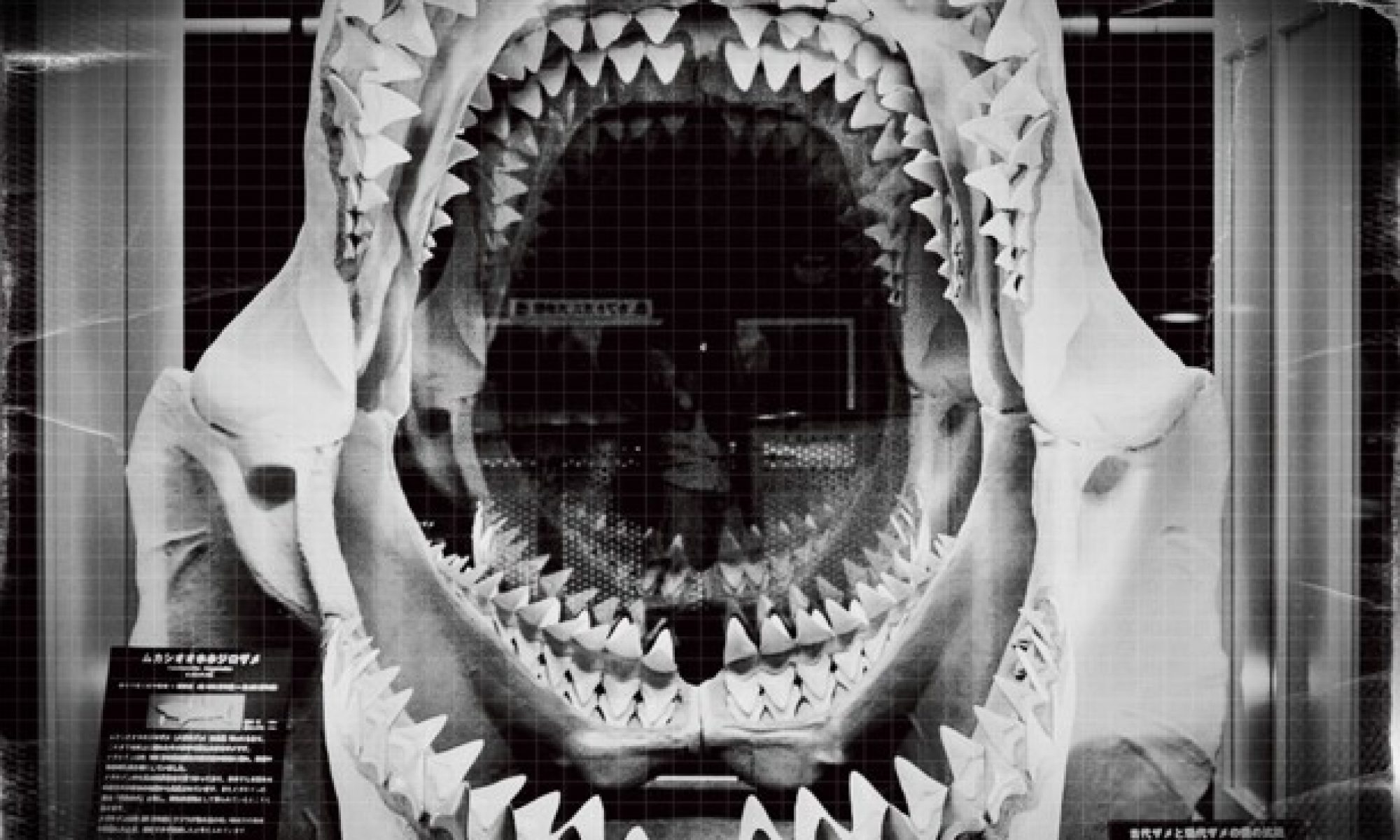We have a fascination with sharks, and we have a fascination with enormous animals. It follows that one of the most popular fossils in the commercial world is the tooth of the biggest ever shark, Otodus megalodon, often known simply as Meg. Sharks, on the other hand, don’t care about us at all.
As shark skeletons are made of cartilage rather than bone, they tend not to fossilize. What do get preserved are the teeth, and it’s these that give Meg its name – megalodon simply means “big tooth”. It’s thought there would have been between 250-280 teeth in its jaw. Sharks grow and shed teeth constantly throughout their life, so over a lifetime a single animal will have produced thousands of teeth. As a result, there are plenty fossilized for us to find and treasure.
Size estimates vary, depending on who you listen to, but most would put the adult shark somewhere between 34 and 60 feet long, with the biggest of these (probably females) weighing as much as 60 tons. The figures vary as there are different ways to calculate the size of the shark from the teeth alone. What we are sure about is that the biggest tooth found – so far – measures over 7” long.
Huge teeth, lots of them, and incredible power in the bite makes for a terrifying predator. So – what did they eat? Megs first appear in the fossil record at 20-23 million years ago, and we think they became extinct at around 3.6 million years ago. Modern humans have never had to worry about exactly what being eaten by a meg would be like. We can speculate, of course. It would almost certainly be an unsettling experience, uncomfortable and painful, if mercifully brief. And we’d probably swallow a lot of seawater, which is never fun. Great Whites, the largest predatory shark living today, have a varied diet, feeding on seals, turtles, large fish, American teenagers*, smaller cetaceans and even birds. Although not closely related, it’s likely meg would have been similar. There are plenty of whale bones – from very large whales – that show predation from megalodon.
Megalodons have shifted around the shark family tree a few times, and were recently moved into the genus Otodus. It had wrongly been thought they were ancestors of the modern Great White, but were then assigned the name Carcharocles. This latest reshuffle means meg has a family history going back about 100 million years. Like many deep water sharks, it was a traveller, and teeth have been found on every continent apart from Antarctica. The main source is South Carolina, where collectors can pick them up at beach and river sites, though the best are found by divers using feeling their way through the soft sediments of the riverbeds, blinded by the mud they stir up. Must be quite a thrill to head to the surface with a giant tooth in your hand.
*This is a Jaws joke. Sharks don’t eat many humans, really, and don’t seem to be fussy when they do.

